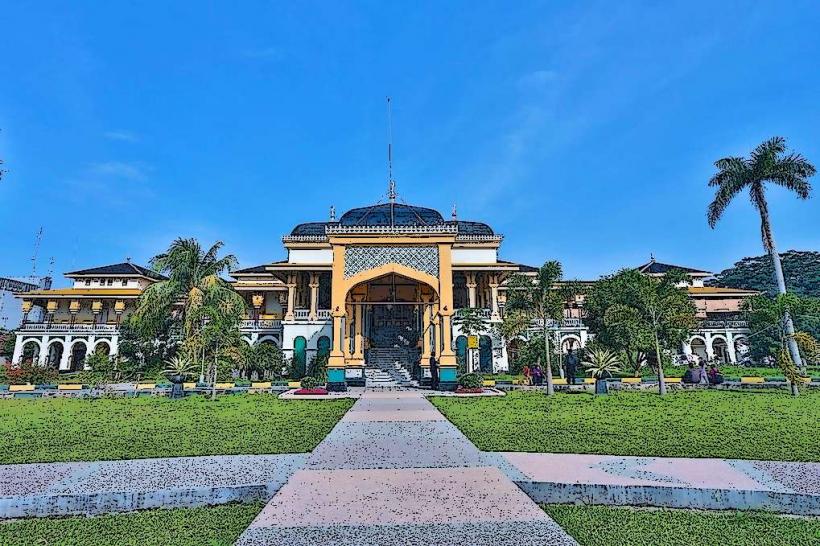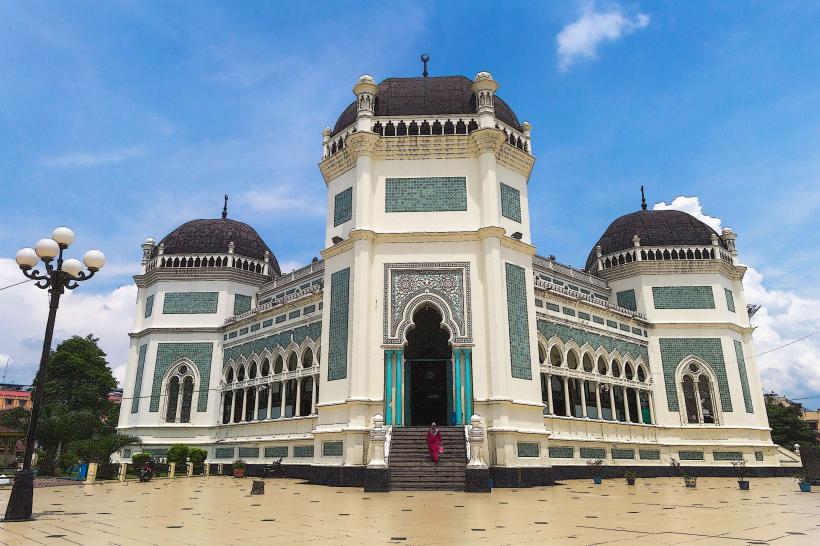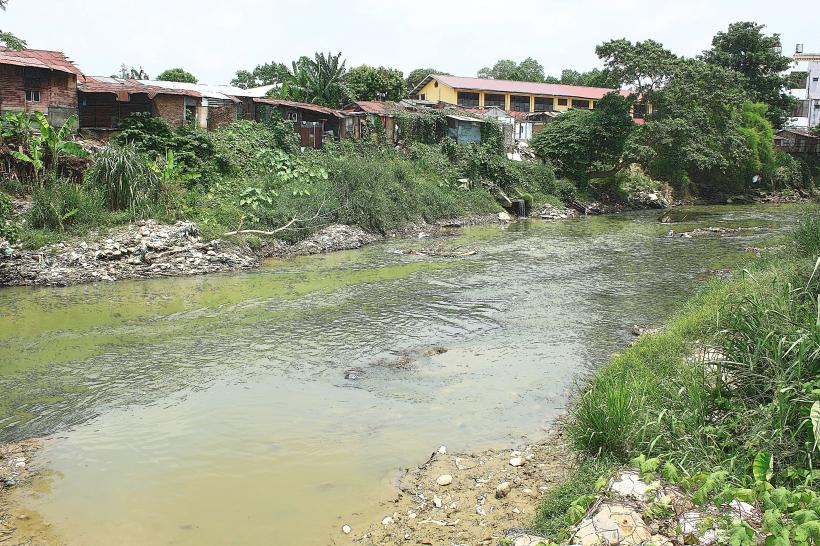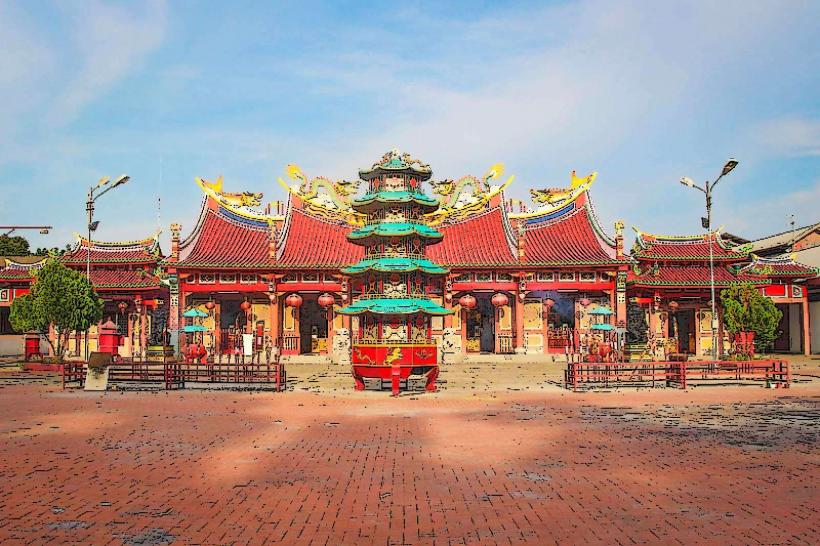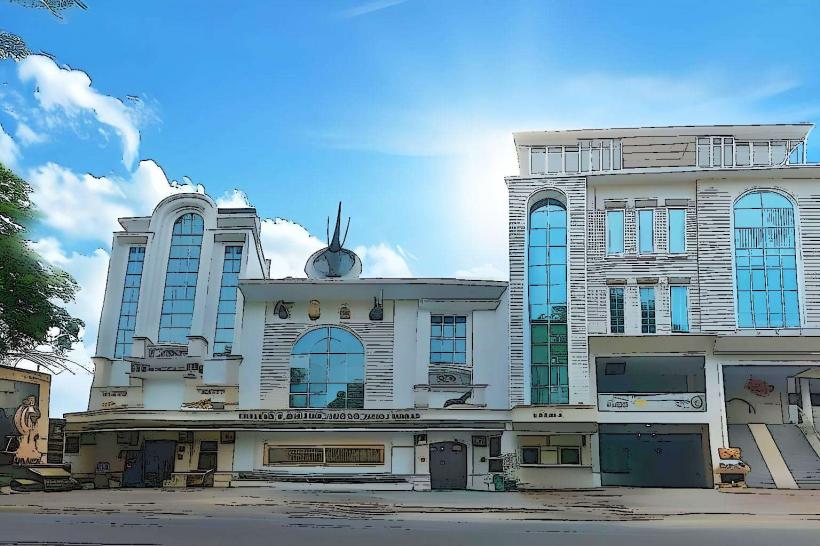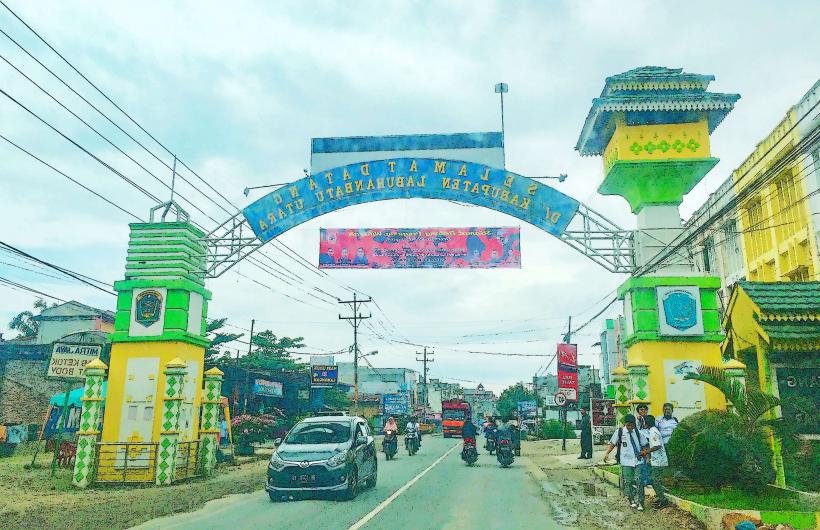Information
Landmark: Tjong A Fie MansionCity: Medan
Country: Indonesia
Continent: Asia
Tjong A Fie Mansion is a historical landmark in Medan, North Sumatra, Indonesia, that offers visitors a glimpse into the life and legacy of one of the city's most prominent figures during the colonial era. The mansion is the former residence of Tjong A Fie, a wealthy Chinese-Indonesian businessman, philanthropist, and community leader. Here’s a detailed look at the mansion:
Overview of Tjong A Fie Mansion
- Name: Tjong A Fie Mansion (Rumah Tjong A Fie)
- Location: Medan, North Sumatra, Indonesia
- Built: Early 20th century, around 1900
- Architectural Style: A blend of Chinese, Malay, European, and Art Deco influences.
- Function: Originally the residence of Tjong A Fie, now a museum open to the public.
Historical Background
Tjong A Fie was an influential figure in Medan during the Dutch colonial period. He was a successful entrepreneur who made his fortune in various businesses, including rubber, opium, and real estate. Tjong A Fie was born in China, but he moved to Medan in the late 19th century, where he became one of the wealthiest men in the city. His mansion, built around 1900, served as both his family home and a symbol of his prosperity.
Tjong A Fie was known for his philanthropy and community involvement, particularly within the Chinese-Indonesian community in Medan. He played a key role in the development of Medan, and his influence extended to both the local Chinese and Malay communities, as well as the broader political and economic spheres.
After his death in 1921, the mansion continued to serve as a private residence for his descendants until it was converted into a museum in 2009. Today, the Tjong A Fie Mansion serves as an important historical site, showcasing the life and legacy of this influential figure.
Architectural Features
The mansion is a unique blend of architectural styles, reflecting both the cultural influences of the era and Tjong A Fie’s background. Key architectural features include:
Chinese Influence:
- The mansion’s design incorporates traditional Chinese architectural elements, including the use of red and gold color schemes, wooden lattice windows, and intricate carvings of mythical creatures such as dragons and phoenixes. These elements are meant to symbolize wealth, prosperity, and good fortune.
Malay and Colonial Influence:
- The structure also displays Malay and colonial influences, with European-style furnishings and decorative tiles that are common in houses of the period. High ceilings, wide windows, and open courtyards are characteristic of the colonial-style houses built during the early 20th century in Southeast Asia.
Art Deco Elements:
- The mansion also features Art Deco influences, particularly in the furniture and decorative pieces found inside the house. The furniture’s clean lines and geometric shapes reflect the influence of European styles that were popular during the early 1900s.
Spacious Rooms:
- The mansion boasts large rooms, including a grand living room, dining room, and personal chambers. The spaces are elegantly decorated with antique furniture, porcelain, and artwork that reflect Tjong A Fie’s wealth and refined tastes.
Reception Area:
- The mansion’s entrance hall and reception area are grand, designed to impress visitors and dignitaries. The grand staircase leading to the upper floor is a prominent feature.
Garden and Courtyard:
- The mansion is surrounded by a beautiful garden and courtyard, providing a serene atmosphere. The garden is adorned with tropical plants, fountains, and traditional Chinese garden elements like stone statues and koi ponds.
Tjong A Fie’s Legacy and Role in Medan’s History
Tjong A Fie was not only a successful businessman but also a philanthropist who contributed to the development of Medan and the well-being of its people. Some of his major contributions include:
Community Development:
- Tjong A Fie was deeply involved in community affairs, particularly in promoting the welfare of the Chinese-Indonesian community in Medan. He helped build schools, temples, and charitable organizations.
Support for the Arts:
- He was a patron of the arts, supporting local Chinese opera performances and other cultural activities. His contributions helped to shape the cultural life of Medan during the colonial era.
Political Influence:
- Tjong A Fie held significant political influence and was closely connected to the colonial administration. He used his position to advocate for the Chinese community and maintain peace and cooperation between the Chinese and Malay populations in Medan.
Philanthropy:
- His philanthropic efforts included donations to various causes, including building schools and hospitals and supporting charitable foundations. He was well-respected for his generosity and concern for the welfare of others.
Museum Experience and Visitor Information
Today, the Tjong A Fie Mansion functions as a museum that allows visitors to explore the life and legacy of Tjong A Fie and learn more about the history of Medan during the colonial period. The mansion’s museum exhibits feature:
Historical Artifacts:
- The mansion is filled with antique furniture, photos, documents, and personal belongings of Tjong A Fie. These artifacts provide insight into his life and the historical context in which he lived.
Guided Tours:
- Visitors can take guided tours of the mansion, where they will be introduced to the history of the building, Tjong A Fie’s life, and the historical significance of the mansion. The guides provide fascinating insights into the history and cultural context of the period.
Cultural Exhibitions:
- The museum regularly hosts cultural exhibitions that showcase the history and heritage of the Chinese-Indonesian community, as well as the broader history of Medan and North Sumatra.
Photography:
- The mansion offers a great opportunity for photography, especially the well-preserved interior and exterior of the building, as well as the beautiful gardens and fountain.
Souvenirs and Gifts:
- The museum also features a small shop where visitors can purchase souvenirs, such as traditional Chinese handicrafts, local snacks, and other items related to the cultural heritage of Medan.
Visitor Information
Location:
- Tjong A Fie Mansion is located in the city center of Medan, specifically on Jl. Jend. A. Yani No. 105, Medan.
Entry Fee:
- The entrance fee for the mansion is usually around IDR 20,000 to IDR 50,000, though this may vary for foreign and local visitors.
Opening Hours:
- The mansion is typically open from 9:00 AM to 4:00 PM daily. It’s recommended to check ahead for special closures or holiday hours.
Conclusion
The Tjong A Fie Mansion offers an insightful and immersive experience into the history of Medan and the life of one of its most influential figures. The mansion’s unique architectural design, along with the rich historical artifacts on display, provides visitors with a deeper understanding of the city’s multicultural past and the legacy of Tjong A Fie. Whether you're interested in history, culture, or architecture, a visit to the Tjong A Fie Mansion is a must for anyone exploring Medan.

